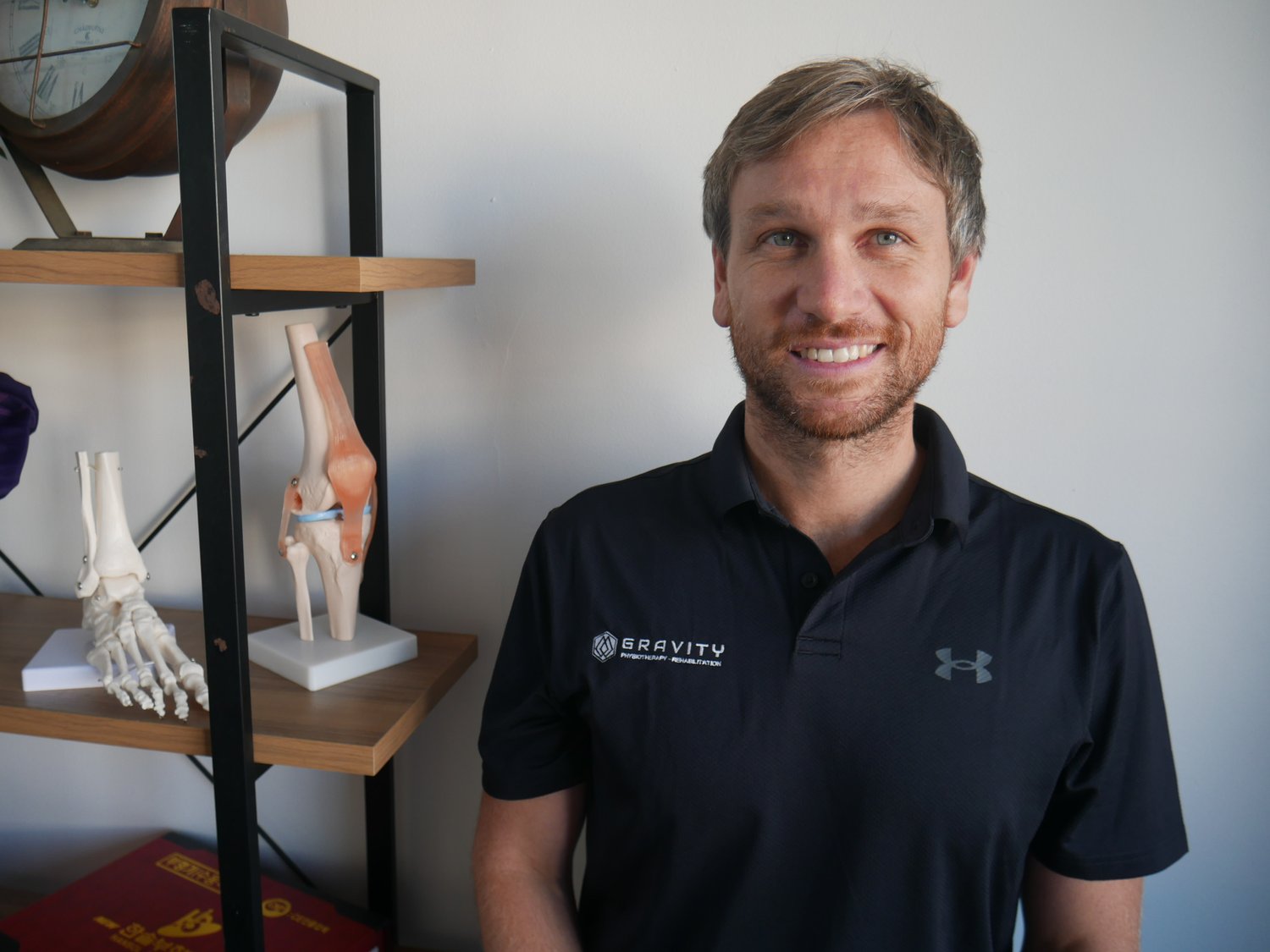Understanding Shoulder Instability: From Dislocation to Atraumatic Instability
Shoulder instability is a common problem that can significantly impact an individual's ability to participate in sports and daily activities. From dislocations to subluxations and atraumatic instability, there are various forms of shoulder instability that require different management approaches. In this comprehensive guide, we will explore the best strategies to safely and effectively manage shoulder instability, allowing individuals to return to their sport of choice with confidence.
What is Shoulder Instability?
Shoulder instability refers to the excessive movement of the humeral head (upper arm bone) within the shoulder joint. It can manifest as a dislocated shoulder, where the humeral head completely comes out of the shoulder socket, or as a subluxation, where the humeral head partially comes out of the socket and then goes back in. There are different types of shoulder instability, including anterior glenohumeral joint instability, posterior instability, and multidirectional instability (MDI). Understanding the specific type of instability is crucial in determining the most appropriate management strategy.
Anterior Glenohumeral Joint Instability
Anterior glenohumeral joint instability is the most common type of shoulder instability, accounting for approximately 95% of all shoulder dislocations. It often occurs as a result of a traumatic event, such as a fall onto an outstretched arm or a direct blow to the shoulder. Younger individuals, particularly athletes engaged in contact sports, are more prone to anterior glenohumeral joint instability. The primary goal of management is to restore stability to the shoulder joint and prevent recurrent instability episodes.
Posterior Instability
While less common than anterior instability, posterior shoulder instability can also occur, particularly in overhead athletes. It is characterized by the humeral head shifting backward in the shoulder socket. Rehabilitation programs focusing on range of motion, scapular muscle strengthening, and sport-specific exercises can help alleviate symptoms and improve stability in individuals with posterior instability.
Multidirectional Instability (MDI)
Multidirectional instability (MDI) is a unique form of shoulder instability characterized by excessive movement of the humeral head in multiple directions. It often occurs in individuals with inherent shoulder laxity or as a result of repetitive overhead activities. Non-operative management is typically the first-line treatment for MDI, incorporating targeted physical therapy to strengthen the dynamic stabilizers of the shoulder joint.
Non-Operative Management of Shoulder Instability
Non-operative management is often the initial approach for individuals with shoulder instability, regardless of the specific type. The primary goals of non-operative management are to improve range of motion, strengthen the surrounding muscles, optimize shoulder stability, and alleviate pain. This approach is particularly effective for individuals with a low risk of recurrence, absence of glenoid bone loss, and appropriate timing in-season for a safe return to play.
Rehabilitation Programs
Rehabilitation programs play a crucial role in non-operative management of shoulder instability. These programs typically involve a combination of exercises targeting range of motion, strength, scapular positioning, and muscle coordination. The specific exercises and progression of the program may vary depending on the type and severity of instability, as well as the individual's sport and position.
Range of Motion Exercises
Restoring full range of motion is a primary goal in shoulder instability rehabilitation. Various stretching and movement exercises, often utilizing props like a broomstick or pulley, can help restore the shoulder's mobility. These exercises should be performed repetitively to gradually regain full range of motion.
Strengthening Exercises
Strengthening the muscles surrounding the shoulder joint is essential for restoring stability and preventing future instability episodes. The focus is often on the rotator cuff muscles, which play a crucial role in shoulder movement and control. Additionally, strengthening the muscles that control the shoulder blade (scapula) is important for providing a stable base for arm movement.
Coordination and Activation Exercises
Restoring coordination and activation of the muscles involved in shoulder movement is vital for achieving full functional recovery. Timing and activation exercises help improve the synchronization of the muscles, allowing for controlled and efficient overhead movement. These exercises can be tailored to an individual's specific sport and movement patterns.
Comprehensive Strength and Conditioning Program
In addition to targeted shoulder rehabilitation exercises, a comprehensive strength and conditioning program is typically recommended to restore overall strength and conditioning before returning to full activity. This program involves exercises targeting all major muscle groups, not just those directly involved in shoulder function.
Functional Bracing
Functional bracing may be considered as a temporary measure to support the shoulder joint and provide stability during mid-season injuries. However, the evidence supporting the use of functional braces is limited, and their effectiveness in facilitating a safe return to sport for overhead athletes is questionable. Individualized assessment and guidance from a healthcare professional are crucial when considering the use of functional bracing.
Surgical Options for Shoulder Instability
In cases where non-operative management fails to provide adequate stability or when there are specific indications for surgery, surgical intervention may be necessary. Surgical options for shoulder instability include arthroscopic capsulolabral repair (Bankart repair), open labral repair, bony augmentation procedures, remplissage, and capsular plication. The choice of surgical procedure depends on various factors, including the type and severity of instability, individual preferences, and the expertise of the surgeon.
Arthroscopic Capsulolabral Repair (Bankart Repair)
Arthroscopic capsulolabral repair, also known as the Bankart repair, is a common surgical procedure for anterior glenohumeral joint instability. It involves reattaching and tightening the torn labrum and capsule to restore stability to the shoulder joint. Arthroscopic Bankart repair has shown promising results in terms of reducing recurrent instability; however, the ability to return to the same level of sport varies among individuals.
Bony Augmentation Procedures
In cases where there is significant glenoid bone loss, reconstruction procedures such as the Latarjet procedure may be recommended. The Latarjet procedure involves transferring a piece of bone from another part of the body to the shoulder to fill the bone defect and provide stability. While this procedure can effectively stabilize the shoulder, it may limit the ability to achieve extreme degrees of abduction and external rotation, impacting athletic performance.
Posterior Capsulolabral Repair
Posterior capsulolabral repair is a surgical option for individuals with posterior shoulder instability. It involves reattaching and tightening the torn labrum and capsule in the posterior aspect of the shoulder joint. Posterior capsulolabral repair has shown positive outcomes in terms of return to sport, particularly in throwing athletes. However, careful patient selection and a tailored rehabilitation program are essential to optimize outcomes.
Surgical Management for Multidirectional Instability (MDI)
For individuals with MDI who have failed conservative management, surgical intervention may be considered. Open labral repair with capsular shift is a commonly performed procedure for MDI. This procedure involves repairing the labral tear and tightening the capsule to improve shoulder stability. However, over-stabilization can limit the shoulder's range of motion, which may impact performance in overhead athletes.
Return to Sport and Long-Term Considerations
Returning to sport after shoulder instability requires careful consideration and individualized planning. Each individual's rehabilitation progress, sport-specific demands, and risk factors for recurrent instability should be taken into account. It is important to note that while surgical interventions may provide stability, the risk of recurrent instability and the potential need for future surgeries should be discussed with patients.
Rehabilitation and Return to Sport Criteria
The decision to return to sport after shoulder instability is based on several factors, including the restoration of full range of motion, strength, absence of pain, and absence of apprehension. Rehabilitation programs typically take between 1 and 3 months for non-surgical management, or 6-9 months if surgery is decided upon, and depending on the individual's age, sport, position, and severity of the instability episode. Compliance with the rehabilitation program and achieving specific criteria are essential for a safe return to sport.
Long-Term Outcomes
Long-term outcomes following shoulder instability management vary among individuals. Factors such as the type and severity of instability, age, sport, and individual characteristics can influence outcomes. It is important to set realistic expectations regarding the potential for recurrent instability, persistent pain, and the need for future surgeries. Regular monitoring and follow-up with healthcare professionals are crucial to ensure optimal long-term outcomes and address any concerns that may arise.
Conclusion
Shoulder instability, whether resulting from dislocation, subluxation, or atraumatic causes, can significantly impact an individual's ability to engage in sports. Understanding the type and severity of instability is crucial in determining the most appropriate management strategy. Non-operative management, including targeted rehabilitation programs, is often the initial approach. Surgical intervention may be necessary in cases of failed non-operative management or specific indications. Return to sport should be carefully planned, considering individual progress and sport-specific demands. Long-term outcomes should be monitored, and individuals should be educated about the potential for recurrent instability and the need for future surgeries. With the right management approach and ongoing care, individuals with shoulder instability can safely and effectively return to their desired level of activity.




